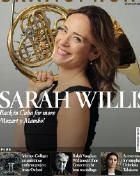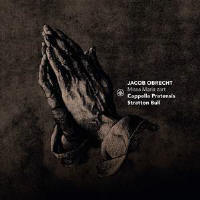Texte paru dans: / Appeared in: |
|
 |
Outil de traduction |
|
It was described by my colleague Fabrice Fitch as 'one of Renaissance music's hidden gems', but I think it's now true to say that this Mass is finally out in the open. This new release from Ensemble Pratensis is one of those rare, landmark albums that offers a striking alternative performance of a piece already afforded a major entry in the catalogue from The Tallis Scholars (Gimell, 3/96) as well as Beauty Farm (Fra Bernardo, 9/19) and the venerable Prague Madrigal Singers (Supraphon, 6/72). As such we now have a range of approaches to help us know better this extraordinary polyphonic behemoth. Cappella Pratensis use lower male voices (the top line sung by countertenors, as with Beauty Farm) and Germanic pronunciation, and read from a specially commissioned choirbook that demands they stand in close formation. The result is a warm huddle of sound, more intimate than grand. Framing the Mass with the monophonic lied that forms the cantus firmus and two polyphonic settings further increases a sense of intimacy with this material before it is broken up by Obrecht into intriguing segments, which ebb and flow stylishly in this polished performance. Obrecht's music is mesmeric, and as such it's fascinating to compare this with The Tallis Scholars, sounding so fresh and spacious but sepia-tinged due to Peter Phillip's unhurried tempos. What caught my ear three decades ago were the hypnotic repetitions on '[Kyrie] e-leison'. In this new performance, Stratton Bull directs more briskly yet still observes such lulling phrase shapes. In the opening of the Sanctus Capella Pratensis make their most attractive blend, and notable also are the 'in nomine Domini' passages of the Benedictus. This is clearly a well-honed performance, strongest in delicate moments. The Credo has a more exciting energy, although 'Qui propter nos homines, et propter nostram salutem' skates along too impatiently for my liking, but I love the superb change of texture at 'et vitam venturi seculi' and it's here that the largescale planning of this performance is most apparent. This new release is a happy marriage of musicality and musicology. |
|




